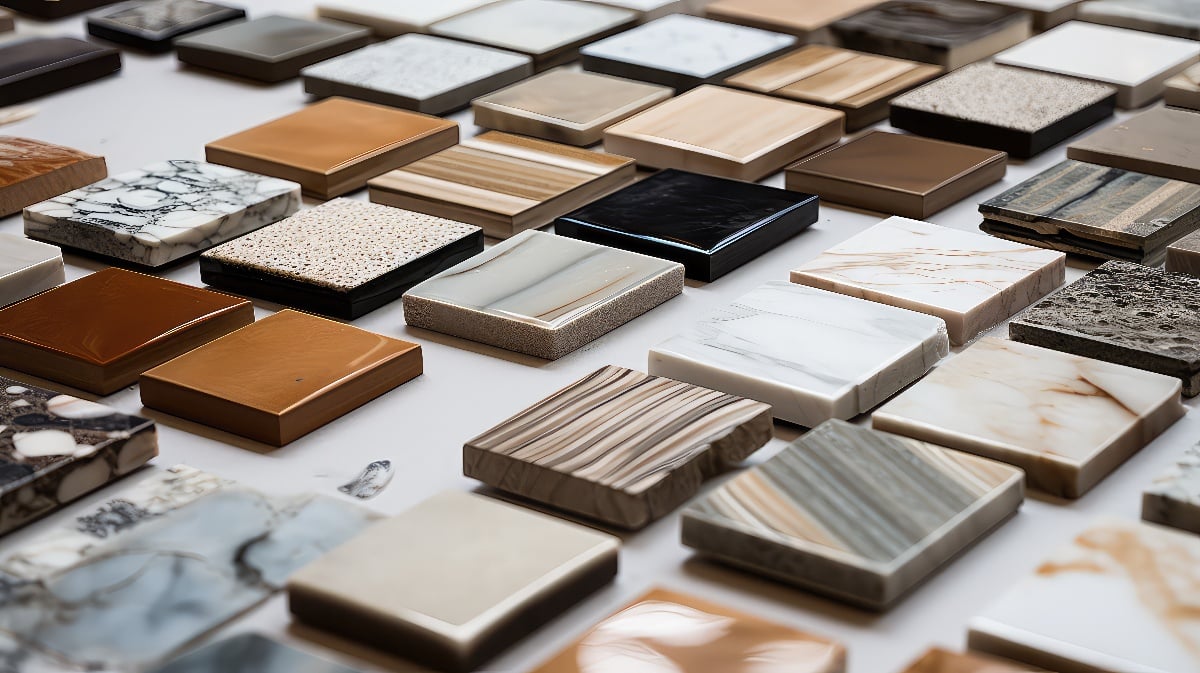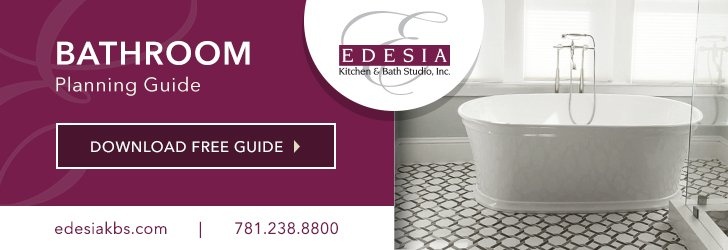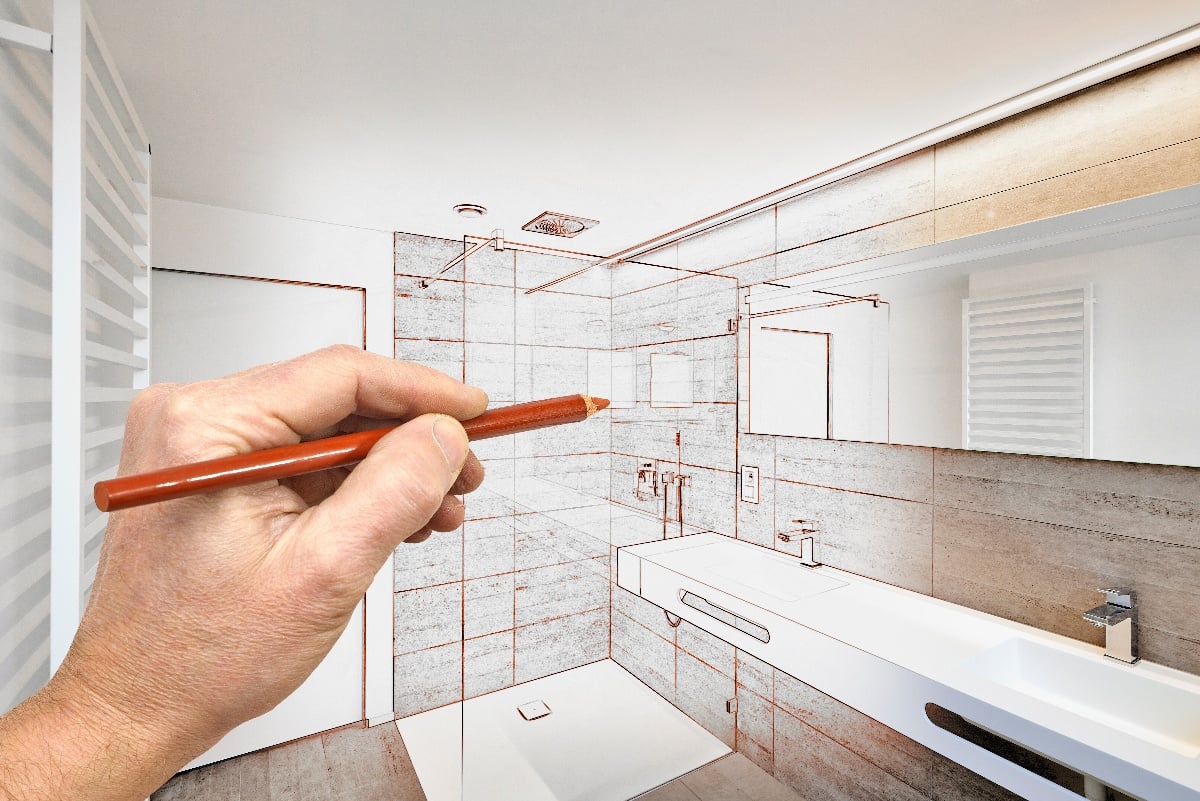You walk into your bathroom every day, but have you really looked at your tiles lately? They probably fade into the background as you go about your morning routine. But your bathroom tiles say a lot about your style. The shapes, sizes, colors, and patterns all work together to create an impression. Whether you want your bathroom to feel spa-like and tranquil or bold and dramatic, the tile design makes a difference.
In this article, we’ll decode common bathroom tile designs so you can understand the vibe they give off. We’ll look at popular tile shapes, patterns, materials, and colors so you can make informed design choices for your next bathroom remodel or refresh.
Arm yourself with tile design knowledge so you can create a bathroom that reflects your personal style.
Popular Bathroom Tile Materials: Pros and Cons of Ceramic, Porcelain, Glass, and Stone Tiles
Ceramic tiles are affordable, low-maintenance, and come in a variety of styles. However, they can stain and scratch more easily. Porcelain tiles are more durable and water-resistant but tend to cost more.
Ceramic tiles
Ceramic tiles are a popular, budget-friendly option. They’re available in a range of colors and styles to match any decor. Unfortunately, ceramic tiles can stain and scratch more easily. They may not be the best choice for high-traffic or wet areas.
Porcelain tiles
Porcelain tiles are more durable and dense than ceramic tiles. They’re highly water-resistant and stain-proof, making them ideal for bathrooms. Although porcelain tiles tend to cost slightly more, their longevity and low maintenance can save you money in the long run.
Glass tiles
Glass tiles create a sleek, polished look. They reflect light beautifully and come in stunning colors and patterns. However, glass tiles can be slippery when wet and may not be as durable as stone or porcelain tiles. They also typically require professional installation, which adds to the total cost.
Natural stone tiles
Granite, slate, and travertine tiles give a bathroom a luxurious feel. Each stone has unique coloring, veining, and texture. Unfortunately, natural stone tiles typically require sealing to prevent staining and water damage. They can also be quite heavy, often necessitating professional installation and reinforcement of the underlying surface.
With so many options, choosing bathroom tiles may seem daunting. But by understanding the pros and cons of each material, you can select tiles that balance style, function, and budget for your space. Focus on high-traffic areas first, then accentuate with more decorative tiles.
Factors to Consider When Choosing Bathroom Tiles: Size, Texture, Color, Pattern
When picking out tiles for your bathroom, there are a few things to keep in mind. The size of the tile depends on the size of your bathroom and the look you want. Large tiles, like 12-inch by 24-inch, create a spacious feel and are good for small bathrooms. For a more intricate look, go with small mosaic tiles.
Texture
The texture also affects the overall design. Smooth tiles are easy to clean but slippery when wet. Textured tiles provide more traction but require more frequent cleaning. For high-traffic, wet areas like showers, textured tiles are best. In guest bathrooms or powder rooms, smooth tiles are fine.
Color and Pattern
Color and pattern dramatically impact the mood and style of your bathroom. Light colors open up the space, while dark colors create an intimate feel. Neutral colors provide flexibility, while bright colors make a bold statement. Patterns from geometrics to florals add visual interest. For small bathrooms, stick to a minimal pattern in a single-color family.
When choosing your bathroom tiles, think about how they'll work together in size, texture, color and pattern. A combination of factors creates an inviting space you'll enjoy for years. With some smart planning, you can have a bathroom that is stylish, functional, and perfectly suited to your needs.
Bathroom Tile Layout and Design Ideas: Subway Tile, Herringbone, Hexagon Tile, and More
Choosing a tile layout for your bathroom walls and floors can be tricky with so many options. Here are some of the most popular styles to consider:
Subway Tile
Classic white or colored subway tile is a timeless choice for bathroom walls. The rectangular tiles are laid in a running bond pattern, offset by half a tile width in each row. This creates a sleek, polished look that is perfect for a modern bathroom. You really can’t go wrong with subway tile.
Herringbone Tile
For a stylish geometric design, herringbone tile features tiles laid in a zig-zag pattern. Often used on floors, the angled edges of the tiles create visual depth and movement. Herringbone tile comes in ceramic, natural stone and porcelain. It works well for bathrooms, aiming for a contemporary yet classic feel.
Hexagon Tile
Hexagon shaped tiles continue to be on trend for bathrooms. Their six-sided shape allows for creative and complex repeating patterns on floors and walls. Hexagon tile comes in ceramic, porcelain and natural stone. For high visual impact, combine white hexagon tiles with dark grout or colored hexagon tiles in complementary shades. Hexagon tile gives a bathroom a modern, sculptural quality.
The options for tile layouts and designs are endless. Don’t be afraid to mix and match—combine subway tile walls with a herringbone tile floor for lots of visual texture or add a mosaic tile accent wall for extra flair. Choosing a stylish tile layout is one of the best ways to make a design statement in your bathroom. Get creative with it!
Conclusion
So there you have it, a quick crash course on bathroom tile designs. With all those terms and trends decoded, you're now equipped to start thinking about what tile styles might work best for your space and style. Just remember, don't be afraid to mix it up a little. Contrasting shapes, sizes, and textures can make for a seriously chic look. And don't stress too much about sticking to one material, either.
Mixing natural stone with ceramic or porcelain can create visual interest too. The most important thing is choosing tiles you connect with and will enjoy seeing every day. Bathrooms are intimate, personal spaces after all. Have fun making yours reflect your unique spirit!










